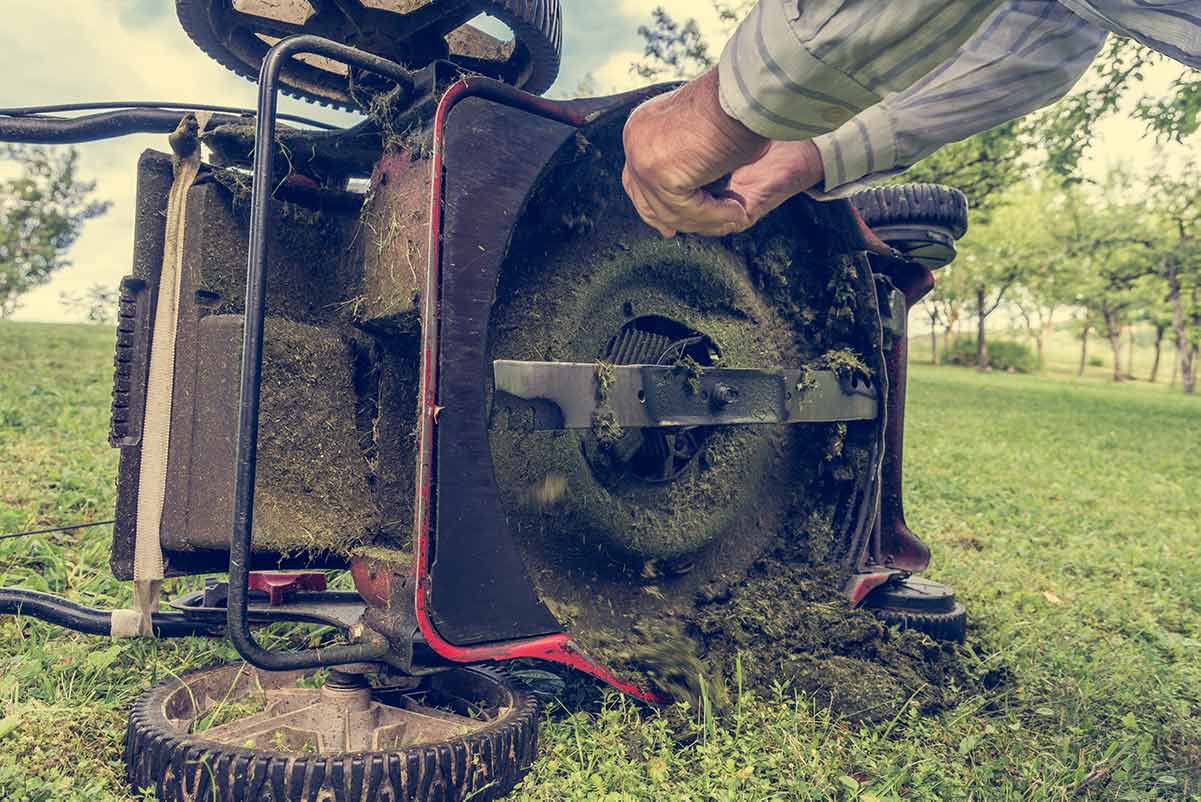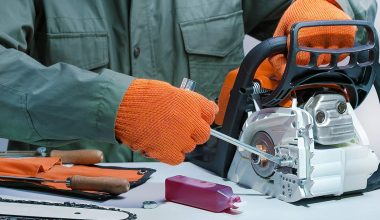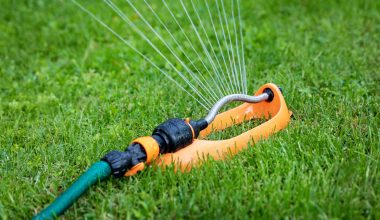Self-propelled mowers are one of the many secrets to maintaining a beautiful lawn, but they can require some practice to use properly. In this article, we’ll look at some of the key things you should be doing to make sure you’re getting the most out of your mower.
Unlike push mowers, the motor on a self propelled mower is connected to the wheels, so the machine will drive forward after you start it. During a long mowing session, this can reduce strain on your shoulders and make the machine much more comfortable to use.
Starting a self-propelled mower
Before you start your mower, you should first identify what type of motor it has. This is important because it affects what type of fuel you should use, and using the incorrect fuel can cause permanent damage to your mower. For a 4-cycle motor, you can use regular unleaded gasoline, just as your would with your car. For a 2-cycle motor, you need to use a mixture of fuel and 2-cycle oil, typically at a ratio of 50:1, but double check your engine specs.
Once you’re fuelled up your mower, you’re almost ready to go. You can now check the bag is empty, and roll the machine to the area you’d like to mow. If it has a fuel primer bulb, press the primer bulb a few times until it becomes hard. This ensures fuel is ready to enter the motor.
Now adjust the cutter deck height to the highest height to make sure the blades don’t get caught in the grass, which could prevent it from starting. Put the throttle to the start position, and if a choke is available (2-cycle motors) engage it.
Now you’re ready to start, so grasp the engine cutout bar with one hand, and the engine pull start cord with the other. Pull the cord gentle until you feel pressure, then give it a sharp tug to start the motor. You might require a few tugs before the motor starts.
Once started, you can set the throttle back to the low position, disengage the choke, and set the cutter to the correct height. Now you’re ready to start mowing! Pull in the second propulsion bar to engage the wheels, and the mower will start moving forwards.
Adjusting Your Speed
While mowing, you might find that your mower is moving too fast or two slow for your to walk comfortably behind it. Adjusting the speed varies slightly from machine to machine, but we’ll cover the main ways you do it below.
For the most simple self-propelled lawn mower, all you need to do is adjust the throttle to control the speed. To go faster, simply give the engine more throttle, and you will hear the engine note change and feel the mower accelerate forward. The opposite is of course true – to slow it down, simply decrease the throttle.
For more complex mowers, you’ll find they actually have a speed dial or lever. Self propelled mowers like the Honda HRX217K5VYA feature a dial, which you can adjust to go faster or slower.
Adjusting the height of your self-propelled mower
On most self-propelled mowers, you’ll have several options to choose from when it comes to your cutting height. You should pick a height based on the desired length of your lawn, the length of the grass right now, and the type of grass and season.
To adjust the height of your mower, you should have the forward propulsion disengaged, either using the lever or the propulsion bar. The engine can still be running. Reach down to the height adjustment lever, and use to the raise or lower the mower deck to the desired height. Remember, never put your feet or hands near the cutter deck, and watch out for loose clothing dangling down and getting caught in the mower.
Turning your mower
There are many different ways to effectively turn your self-propelled mower, but ultimately it comes down to how comfortable you are and what type of mower you have. The most basic way is to let off the self-propelled lever, and then turn the mower 180 degrees around before pulling the self-propelled lever back on again.
For front wheel drive mowers, you have another option, which is to pull the mower handle down slightly to make the mower do a little wheelie. Be very careful when you do this, in case the cutter deck throws out stones or debris. You should only raise it an inch or so to lift the front wheels off the ground. Then you can easily turn the mower on it’s back wheels and head back in the other direction.
Finally, some owners who use mowers withough much tread in the tires like to skid their mower around while it is still in self-propelled mode. This is a little harder to do, and you should be very careful before you try it.
Mowing technique
Mowing with a self-propelled machine is very straightforward. You’ll first want to identify the direction in which you want your stripes, and if you’re looking to bag the cut grass, discharge it, or mulch it.
Bagging will produce the neatest final result, but you’ll have to unload the bag of cuttings onto a compost heap as you go, which some find annoying. Mulching is becoming more popular as it recycles the nutrients back into the ground. Discharging is the quickest method, but leaves loose cuttings on your lawn which some people find unsightly.
When you’re ready to go, you’ll mow back and forth in stripes, being careful to overlap each stripe by a couple of inches to make sure you don’t miss an bits. Turn the mower 180 degrees at the end of each stripe and head back in the other direction, keeping your stripes parallel. When you’re done striping, do one more lap of the edge of your lawn to clean up your turning areas, and you’re done.






